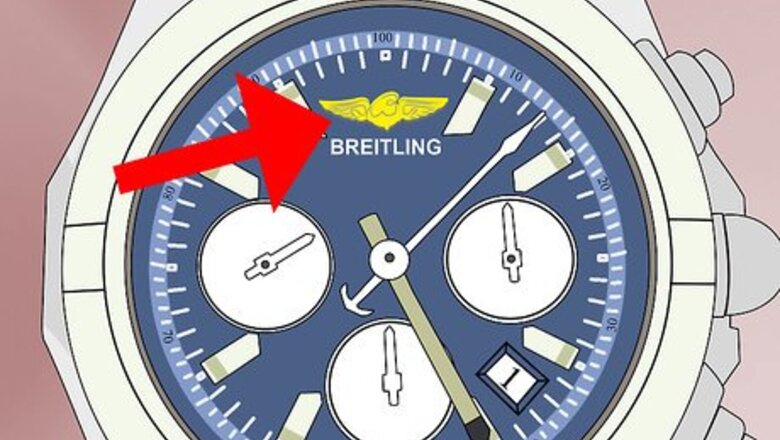
views
Identifying Flaws on the Watch Face
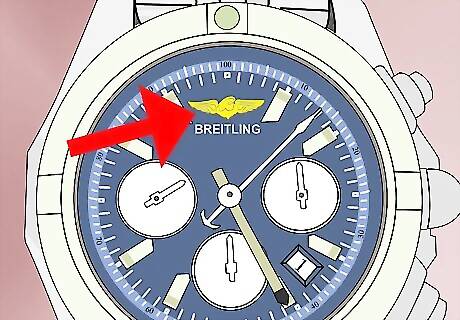
Take a look at the logo on the face. Breitling watches are either printed or applied with a logo bearing an anchor fixed between a set of wings, or a curvaceous 'B' . The logo can either be present on the top centre or side of the watches dial, with the Breitling name occasionally printed below. Not always etched directly into the face, Breitling also uses applied logos. If the logo is printed, or appears abnormally large or fuzzy, it’s most likely a fake. Breitling occasionally has a small anchor symbol on the counterweight of the second hand of their watches. Some models (colt a17350 for instance) do not have this anchor yet are still legit. People that state 'if this anchor is absent or sloppily printed, you’re dealing with a fabrication' are un-knowledgeable and should be kept at distance when seeking advice on Breitlings.
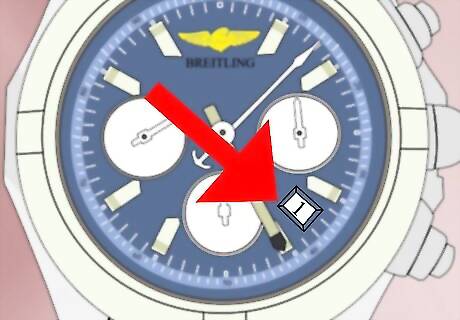
Know what to look for in the calendar display. Inspect the dials beneath the Breitling logo and look for one displaying the date. Some Breitlings are “chronograph” watches, meaning they feature a stop watch. The subdials on most authentic Breitling watches are used to display the various measurements of the chronograph, and none should show the days of the week or month. If your Breitling watch does have a calendar display, it will appear in a separate, window. Counterfeit watches most often display the day and month directly on one of the subdials.

Check for misspellings. Carefully examine the face and back of the watch for lettering errors. As Breitling watches are of Swiss origin, different parts of the watch will contain Swiss words and slogans that are often spelled incorrectly on imitations. Take particular notice of the quality of the printing, as fakes utilize cheaper printing methods that often result in a fuzzy or pixelated appearance of the letters. Since the lettering on Breitling watches is written in Swiss (and sometimes French), it can be difficult to know if a section of text is misspelled. Consult images of authentic Breitling models online to verify authentic spellings and printing methods.
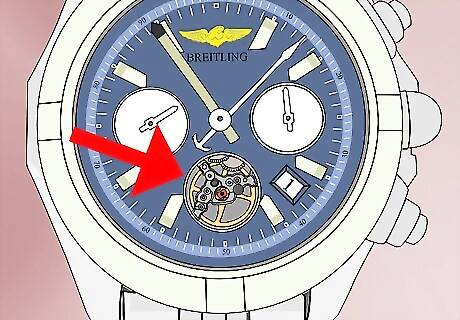
Be suspicious of “open heart” designs. See if the watch’s escapement is visible; this is what is known as an “open heart” watch design. The escapement is a small device used to regulate the watch’s mechanical movement. Breitling only manufactures one open heart model, and its numbers are extremely limited. If your Breitling watch has its internal workings in plain sight, you can bet it’s a knock-off. The “Breitling for Bentley Mulliner” is the only Breitling watch with an open heart design.
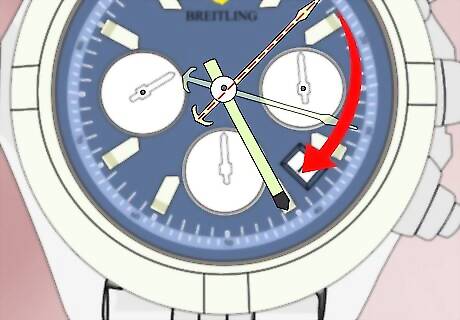
Watch the movement of the hands. Do the hands of your watch move in a continuous, sweeping motion, or is there a separate tick for each passing second? Breitling make both automatic and quartz movement watches, ensure that the advertised movement is consistent with the ticking rhythm.
Checking for Quality Indicators
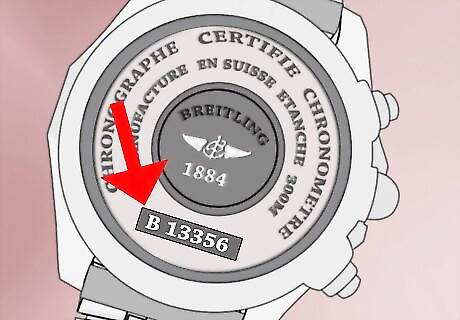
Locate the model and serial number. Look the band over for the watch’s model and serial number. Breitling stamps each and every one of their watches with these manufacturing details, either on the band, the casing or both. If you don’t find this unique stamp, or if the stamp lists an incorrect model or serial number, it’s not the genuine article. Breitlings with metallic bracelets will usually have the model and serial number stamped on the bracelet itself, while some models with leather straps bear the stamp on the back of the watch instead, in case the band is replaced. Authentic leather strap watches will also be marked with the French phrases “cuir veritable” (genuine leather) or “croco veritable” (genuine crocodile skin), depending on the material. Replicas tend to leave out this detail, or get the type of material wrong.
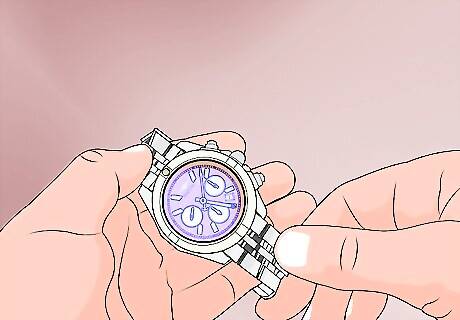
Test for glare. Hold the watch up to a light source to see if there’s a glare off the face. The crystal in a real Breitling is brushed with an anti-glare coating to cut down on the amount of light it reflects. There shouldn’t be much of a glare, and what reflection there is will be slightly bluish from the color of the crystal. If the watch face creates a blinding glare, you can bet it’s a fake.
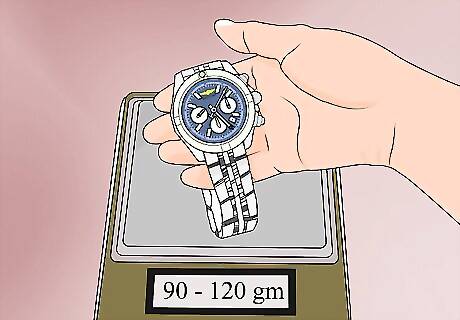
Feel for the watch’s weight. Hold the watch in your hand to assess its weight. Because of it’s heavy-duty, stainless steel construction and the quality of its internal components, the authentic watch should have a satisfying heft to it. The majority of replicas are manufactured from cheaper metals or even plastic, making them feel light and easily breakable. While many different models exist, the average weight of a Breitling watch is somewhere between 90-120g. Weight should not be the sole indicator of authenticity for a watch, as makers of knock-offs sometimes fill their watches with unnecessary pieces to make them heavier.
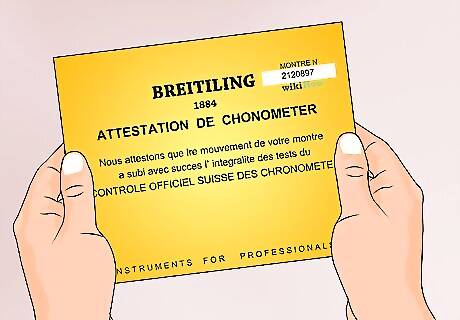
See if the watch comes with a certificate. If you’re buying the watch new, it should always come with a printed certificate of authenticity listing its technical specifications and manufacturing origin. The information contained in the certificate will describe the individual components of the watch, many of which can be used to tell a real watch from a fake one. An imitation will not go to the trouble of replicating this certificate. When buying a used Breitling, ask the current owner if the watch came with an official certificate.



















Comments
0 comment